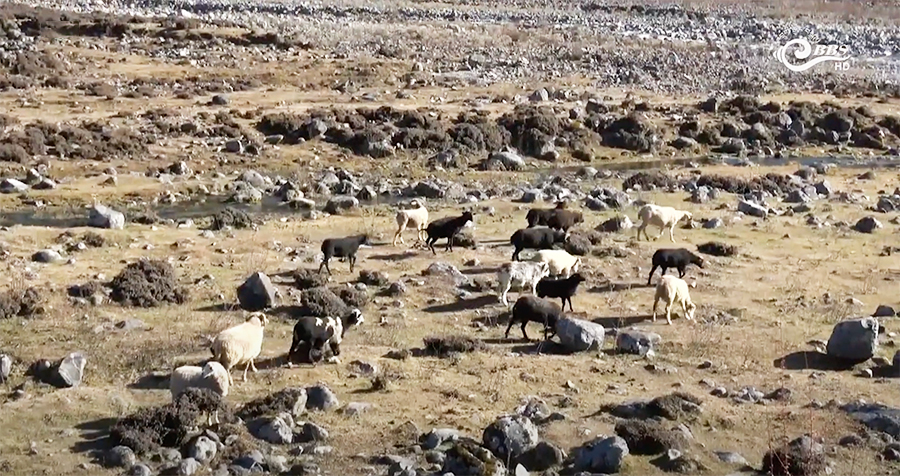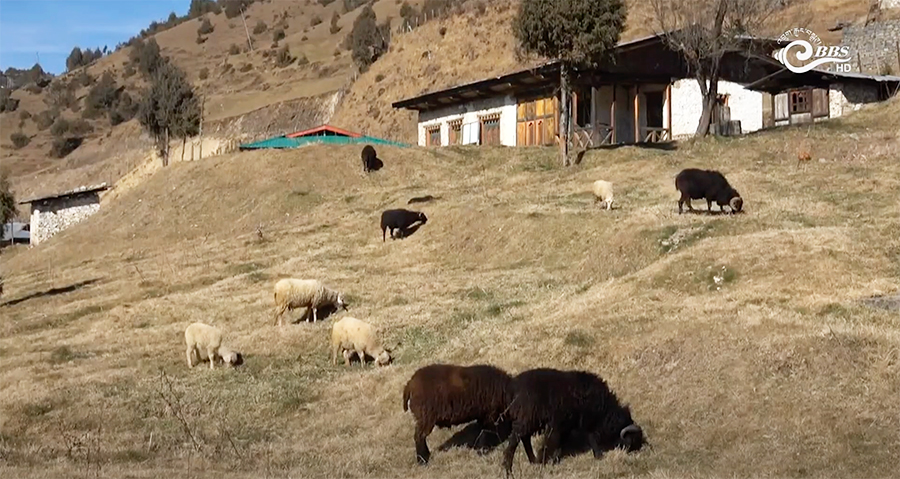
Sheep-rearing, once a key livelihood for the people of Sakteng Gewog in Trashigang, is gradually declining. Today, only 40 households rear sheep for wool to weave their traditional dresses. However, feral dogs are posing a significant threat. The dogs kill 30 to 40 sheep each year, further discouraging the rearing practice.
 The feral dogs hide in bushes and along the riverside, often behind large stones. When sheep come close, the dogs attack and kill them.
The feral dogs hide in bushes and along the riverside, often behind large stones. When sheep come close, the dogs attack and kill them.
 To protect their sheep, people keep them near the village and some in fenced areas. Despite these efforts, the dogs continue to kill.
To protect their sheep, people keep them near the village and some in fenced areas. Despite these efforts, the dogs continue to kill.
Besides limited pastureland, the threat from feral dogs is a major reason why sheep rearing is declining in Sakteng.
“Before, I had around 30 sheep. But the number keeps decreasing because feral dogs kill the lambs. Even with guarding, the dogs continue to attack and kill them,” said Sang Buthri, a resident of Sakteng Gewog.
“I received sheep from the gewog, and they gave birth twice a year, once in winter and again in spring. Unfortunately, the dogs killed them all. Now, I only have two young sheep left. The dogs don’t just attack the sheep, they also chase us when we are alone,” said Tshering Choden, another resident of Sakteng Gewog.
People said that the decline in sheep population has reduced wool production, making it harder to preserve traditional clothing and mattress weaving.
“The government sterilised the dogs a few years ago, and I hope this will reduce their numbers in the future. We also plan to discuss with owners of dog care centres about relocating the dogs if they agree,” said Tshewang Tshering, Sakteng Gup.
Last financial year, the gewog spent Nu 150,000 to buy 150 sheep from Bumthang and Phobjikha to revive sheep rearing. Currently, around 40 households have nearly 200 sheep in the gewog.
Sonam Darjay, Trashigang
Edited by Sonam Pem









